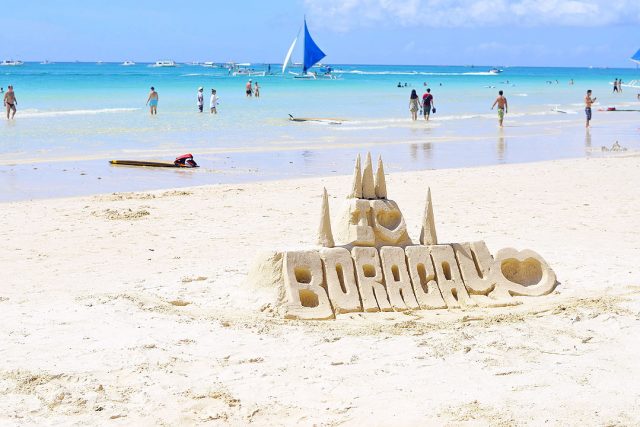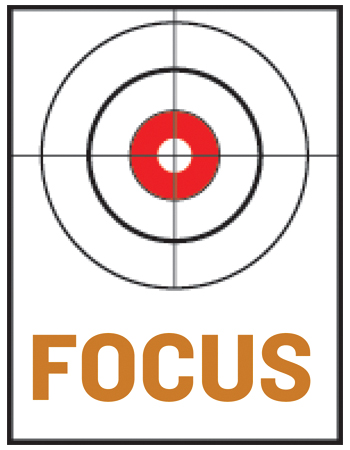
By Luz Wendy T. Noble, Reporter
WAILING KIDS are at the jam-packed Caticlan seaport that leads to the world-famous Boracay Island in central Philippines.
A mother tries to bargain for quiet through nursery rhymes on YouTube, while fanning herself during an oppressively hot weather. It could well have been a picture before the coronavirus hit, only this time, people wore face masks.
Editha Regualos, a mother who works for a Netherlands-headquartered customer support company, went to Boracay with her husband and their four-year-old daughter this month after the government lifted a 20-month lockdown for children.
 “My daughter knows Boracay and she was excited when she found out we were coming here,” she said in an interview while checking out fancy souvenirs at a stall along Boracay’s beachfront.
“My daughter knows Boracay and she was excited when she found out we were coming here,” she said in an interview while checking out fancy souvenirs at a stall along Boracay’s beachfront.
The government is banking on local families visiting tourist spots to revive an industry battered by various levels of lockdown for the past 20 months, even as the threat of an Omicron coronavirus variant from Africa looms.
The Philippine central bank held its seventh policy review this year at Shangri-La Boracay, the island’s most prestigious resort. It was also the first time the Bangko Sentral ng Pilipinas (BSP) allowed journalists to cover the event since a strict lockdown was first imposed on the entire Luzon Island in mid-March last year.
“This is our small contribution to the normalization of the economy,” central bank Governor Benjamin E. Diokno said in a speech at a welcome dinner. “What a comeback event — in Boracay.”
There are still not too many people at the D’Mall near the main white beach, but the sight of tourists slowly coming back gives Manny B. Danay, a hotel driver, hope.
Mr. Danay sold rice cakes online when there were no visitors, his market made up of locals and stranded tourists. He recalled how the island experienced a tourist drought in 2018, when Boracay was closed for rehabilitation.
It’s much worse this time, he said.
In 2020, foreign visitor arrivals shrank by 82% to 1.482 million from a year earlier, according to data from the Immigration bureau.
Gina O. Reyes, a saleslady at a souvenir shop, lost her job during the lockdown and her husband became the family’s sole breadwinner.
“The tourists are coming back, but it’s nowhere near the number in 2019,” she said in an interview in Filipino. “I don’t get my full daily salary yet.”
Emet R. Sendin, resident manager at Belmont Hotel Boracay, said they are already seeing signs of recovery. Before the crisis, 200 of their 300 rooms were occupied. Now, they have opened 50 rooms, 30 of which are occupied — higher than the 10 they used to have.
Belmont catered mostly to Chinese tourists before the crisis, he said.
“What this pandemic taught us is not to rely on a specific market,” he said. “We appreciate returning Filipinos for supporting tourism. It really helps us.”
Vanessa A. Andrade, restaurant manager at Cafe Del Sol Boracay, said tourism is far from what it used to be. “In terms of recovery, we’re still very far. There are still days when we have no customers at all.”
The tourism industry accounted for 12.7% of economic output in 2019, based on data from the local statistics agency. By 2020, when the pandemic started, its contribution to the economy had dropped to 5.4% — the lowest in two decades.
In 2020, the sector employed 11.9% of the country’s workers, down from 13.6% a year earlier.
Fully vaccinated people from countries not required to get a Philippine visa may enter the country from Dec. 1 to 15, the government said on Friday, only to suspend the plan three days later amid the threat from the Omicron variant.
The Philippines started suspending flights from South Africa, Botswana, Namibia, Zimbabwe, Lesotho, Eswatini and Mozambique, where the virus mutation that is potentially more contagious is present.
The variant was first discovered in South Africa and has since been detected in Australia, the United Kingdom, Germany, Israel, Italy, the Czech Republic and Hong Kong.
On Sunday, the Philippines also suspended flights from Austria, Czech Republic, Hungary, The Netherlands, Switzerland, Belgium and Italy.
REOPENING
Ms. Andrade, the restaurant manager, eagerly awaits the return of foreign tourists to Boracay. While they are grateful for local tourists, foreigners spend more on food during their vacation, she said.
Jose C. Clemente III, Tourism Congress of the Philippines president, said reopening the Philippines to foreign tourists would mark the beginning of the industry’s revival. “People are excited and hungry for travel,” he said in a Viber message before the policy for vaccinated foreigners was recalled.
Allowing the entry of foreign tourists resembles the “same mistake of March 2020,” when the country failed to quickly close its borders just as the global health crisis started, said John Paolo R. Rivera, associate director of the Dr. Andrew L. Tan Center for Tourism at the Asian Institute of Management.
“Opening our country to foreign tourists is similar to that same mistake, because we know that the COVID-19 situation remains fluid and we have yet to attain herd immunity.” he said in a Zoom Cloud Meetings interview.
The Philippines has fully vaccinated 40.6% of its population, based on data from the Johns Hopkins University. Thailand, which has reopened its border to foreigners, has a higher vaccination rate of 57.7%.
Mr. Rivera said it’s better to focus for now on domestic travelers, who accounted for about 80% of tourism receipts even before the coronavirus pandemic hit, compared with the 20% share of foreign travelers.
Meanwhile, Boracay’s tourism workers think there are better ways to help spur the return of travelers to the island. They cited how a QR code system has become a headache for some visitors, some of whom fail to get one before arriving in Aklan province where Boracay is.
“When the QR doesn’t work, we are affected because the travelers have a hard time entering Boracay,” Ms. Andrade said.
Mr. Sendin from Belmont said the government should streamline rules and make them uniform across key destinations to encourage more travel.
During the pandemic, Boracay remains a paradise where the weary can find rest just by watching its postcard-worthy sunset or by strolling barefoot on its powdery sand. But for the island’s workers, the island is also their lifeline.
Mr. Danay, the hotel driver, hopes the government’s vaccine rollout would lead to more visitors, whether local or foreign. “We hope and pray that more visitors will come. Many of us are raring to get our jobs back.”
Tourists trickle into Philippine paradise as latest variant stares world in its face
Source: Bantay Radio
0 Comments